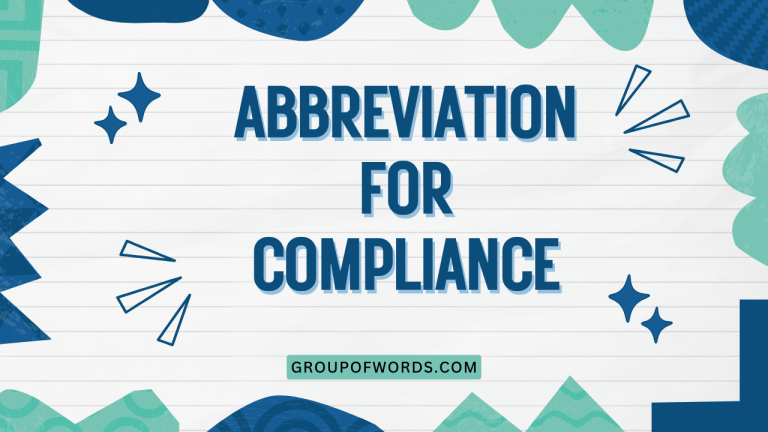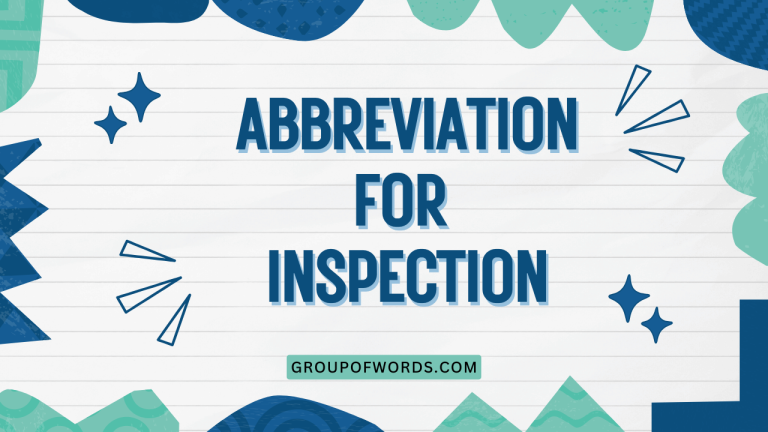Understanding “N/A”: Abbreviation for Unknown or Not Applicable
In the realm of data entry, forms, and general communication, the abbreviation “N/A” is frequently encountered. Mastering its correct usage is crucial for maintaining clarity and accuracy in various contexts.
This article provides a comprehensive guide to “N/A,” covering its definition, structural aspects, different uses, common mistakes, and advanced applications. Whether you are a student, a professional, or simply someone looking to improve your communication skills, understanding “N/A” will enhance your ability to convey information effectively and avoid misunderstandings.
This guide will explore the nuances of “N/A,” offering practical examples and exercises to solidify your understanding. By the end of this article, you will be well-equipped to use “N/A” appropriately and confidently in a wide range of situations, ensuring clear and professional communication.
Table of Contents
- Introduction
- Definition of N/A
- Classification
- Function
- Contexts of Use
- Structural Breakdown
- Types and Variations
- Examples of N/A Usage
- Forms and Applications
- Data Entry Examples
- Surveys and Questionnaires
- Reports and Documentation
- General Communication
- Usage Rules for N/A
- Appropriateness in Different Scenarios
- Consistency in Usage
- Alternatives to N/A
- Common Mistakes with N/A
- Misinterpretation of Meaning
- Overuse of N/A
- Inconsistencies with other Data
- Practice Exercises
- Exercise 1: Fill in the Blanks
- Exercise 2: Identify Correct Usage
- Exercise 3: Scenario-Based Questions
- Advanced Topics
- Cultural Differences
- Technical Implementations
- Frequently Asked Questions
- Conclusion
Definition of N/A
The abbreviation “N/A” stands for “Not Applicable” or “Not Available.” It is used to indicate that a particular piece of information is either not relevant to a specific situation (“Not Applicable”) or that the information is currently missing or unobtainable (“Not Available”). It serves as a placeholder, preventing ambiguity and clarifying why a field or question is left blank.
Classification
“N/A” is classified as an abbreviation and a placeholder. As an abbreviation, it shortens the phrase “Not Applicable” or “Not Available,” making it more concise and efficient to use in forms, tables, and other documents.
As a placeholder, it fills a space where information is expected but cannot be provided, ensuring the data remains complete and understandable.
Function
The primary function of “N/A” is to provide clarity and prevent misinterpretation. By explicitly stating that information is either not relevant or not accessible, it eliminates the possibility of assuming the field was simply overlooked or forgotten.
This is particularly important in data collection and analysis, where accurate and complete information is essential.
Contexts of Use
“N/A” is commonly used in a variety of contexts, including:
- Forms: When a question is not relevant to the individual completing the form.
- Surveys: When a respondent cannot answer a question due to lack of knowledge or experience.
- Reports: When data is missing or not applicable to a particular category.
- Data Entry: When a field in a database does not apply to a specific record.
- Technical Specifications: To indicate that a feature or function is not supported.
- General Communication: In emails or documents where specific information is unavailable.
Structural Breakdown
The structure of “N/A” is straightforward. It consists of two letters, “N” and “A,” separated by a forward slash “/”.
The abbreviation is typically written in uppercase letters, although lowercase (“n/a”) is also acceptable depending on the style guide or specific requirements of the document. The use of the slash is essential as it separates the two letters, making it recognizable as an abbreviation.
The abbreviation does not typically require a period after each letter (e.g., “N.A.”). The slash serves as sufficient punctuation to indicate that it is an abbreviation.
However, consistency is key, so if a particular style guide or organization requires periods, they should be used throughout the document.
Types and Variations
While “N/A” primarily stands for “Not Applicable” or “Not Available,” the specific interpretation can vary depending on the context. Here are some nuances:
- Not Applicable: This indicates that the question or field is not relevant to the situation. For example, if a form asks for a spouse’s name and the individual is single, “N/A” would be appropriate.
- Not Available: This indicates that the information is missing or unobtainable. For example, if a report requires data from a specific period and that data is not yet available, “N/A” could be used.
- No Answer: Although less common, “N/A” can sometimes be used to indicate that the respondent chose not to answer a question. However, it’s generally better to use “No Answer” or leave the field blank with a specific note.
Examples of N/A Usage
To illustrate the proper usage of “N/A,” let’s examine various scenarios and examples across different contexts. Understanding these examples will help you apply “N/A” correctly in your own work.
Forms and Applications
“N/A” is frequently used in forms when a question does not apply to the individual completing the form. This ensures the form is complete without requiring irrelevant information.
The following table provides examples of using “N/A” in forms:
| Question | Scenario | Answer |
|---|---|---|
| Spouse’s Name | Applicant is single | N/A |
| Previous Employer | Applicant has never been employed | N/A |
| Military Service Branch | Applicant has no military service | N/A |
| Driver’s License Number | Applicant does not have a driver’s license | N/A |
| Passport Number | Applicant does not have a passport | N/A |
| Mother’s Maiden Name | Applicant does not want to provide this information | N/A |
| Emergency Contact – Relationship | Applicant does not want to provide this information | N/A |
| Number of Children | Applicant has no children | N/A |
| Previous Address | Applicant has lived at their current address their whole life | N/A |
| Car Make and Model | Applicant doesn’t own a car | N/A |
| Pet Type | Applicant doesn’t own any pets | N/A |
| Hobbies | Applicant doesn’t want to provide this information | N/A |
| Website URL | Applicant doesn’t have a website | N/A |
| Social Media Handle | Applicant doesn’t have social media | N/A |
| Blog URL | Applicant doesn’t have a blog | N/A |
| Reference Contact Number | Applicant doesn’t want to provide this information | N/A |
| Second Language | Applicant only speaks one language | N/A |
| Years of Experience in Construction | Applicant has no experience in construction | N/A |
| Highest Education Degree | Applicant does not want to provide this information | N/A |
| Favorite Color | Applicant does not want to provide this information | N/A |
| Credit Card Number | Applicant doesn’t want to provide this information | N/A |
| Professional License Number | Applicant does not hold a license | N/A |
| Previous Salary | Applicant doesn’t want to provide this information | N/A |
| Preferred Pronouns | Applicant doesn’t want to provide this information | N/A |
| Allergies | Applicant has no allergies | N/A |
In each of these scenarios, “N/A” ensures that the form clearly indicates why the field is left blank, preventing any confusion or assumptions.
Data Entry Examples
In data entry, “N/A” is used to fill fields that are not applicable to a particular record, ensuring data integrity and clarity.
Consider the following table illustrating “N/A” usage in data entry:
| Field | Record | Value |
|---|---|---|
| Second Language Proficiency | Employee only speaks English | N/A |
| Previous Job Title | New graduate with no prior work experience | N/A |
| Vehicle Make | Employee does not own a vehicle | N/A |
| Emergency Contact Name | Employee declines to provide emergency contact | N/A |
| Dependent’s Date of Birth | Employee has no dependents | N/A |
| Previous Company’s Industry | Employee never worked before | N/A |
| Stock Options Granted | Employee is not eligible for stock options | N/A |
| Commission Rate | Employee is not in a commission-based role | N/A |
| Overtime Hours | Employee is a salaried worker and not eligible for overtime | N/A |
| Union Membership Number | Employee is not a member of a union | N/A |
| Years of Experience in Programming | Employee is in a non-programming role | N/A |
| Certification Expiration Date | Employee does not hold the certification | N/A |
| Number of Publications | Employee has no publications | N/A |
| Awards Received | Employee has received no awards | N/A |
| Patent Number | Employee has no patents | N/A |
| Volunteer Experience | Employee has no volunteer experience | N/A |
| Skills | Employee prefers not to share | N/A |
| References | Employee prefers not to share | N/A |
| LinkedIn Profile URL | Employee does not have a profile | N/A |
| GitHub Profile URL | Employee does not have a profile | N/A |
| Portfolio URL | Employee does not have a portfolio | N/A |
| Blog URL | Employee does not have a blog | N/A |
| Twitter URL | Employee does not have a Twitter | N/A |
| Instagram URL | Employee does not have a Instagram | N/A |
| Facebook URL | Employee does not have a Facebook | N/A |
Using “N/A” in these scenarios ensures that the database remains complete and understandable, even when specific information is missing or irrelevant.
Surveys and Questionnaires
In surveys and questionnaires, “N/A” is used when a question is not applicable to the respondent or when they lack the knowledge to answer it.
The following table provides examples of using “N/A” in surveys:
| Question | Scenario | Answer |
|---|---|---|
| Do you own a car? If yes, what is the make and model? | Respondent does not own a car | N/A |
| Have you ever used our product before? | Respondent is not familiar with the product | N/A |
| What is your satisfaction level with our customer service? | Respondent has never contacted customer service | N/A |
| How many times have you visited our store? | Respondent has never visited the store | N/A |
| What is your opinion on our new marketing campaign? | Respondent is unaware of the campaign | N/A |
| What is your average monthly spending on groceries? | Respondent does not buy groceries | N/A |
| What is your preferred method of payment? | Respondent does not want to provide this information | N/A |
| What is your favorite brand of coffee? | Respondent does not drink coffee | N/A |
| What is your opinion on political issue X? | Respondent is not familiar with the issue | N/A |
| How often do you exercise per week? | Respondent does not exercise | N/A |
| What is your favorite sport? | Respondent does not watch sports | N/A |
| What is your preferred social media? | Respondent does not use social media | N/A |
| What is your favorite type of movie? | Respondent does not watch movies | N/A |
| What is your favorite type of music? | Respondent does not listen to music | N/A |
| What is your favorite book? | Respondent does not read books | N/A |
| What is your favorite type of food? | Respondent does not want to provide this information | N/A |
| What is your favorite travel destination? | Respondent does not travel | N/A |
| What is your favorite hobby? | Respondent does not want to provide this information | N/A |
| What is you annual salary? | Respondent does not want to provide this information | N/A |
| What is your home address? | Respondent does not want to provide this information | N/A |
| What is your email address? | Respondent does not want to provide this information | N/A |
| What is your phone number? | Respondent does not want to provide this information | N/A |
| What is your date of birth? | Respondent does not want to provide this information | N/A |
| What is your marital status? | Respondent does not want to provide this information | N/A |
| What is your gender? | Respondent does not want to provide this information | N/A |
By using “N/A,” survey respondents can clearly indicate when a question is not relevant or when they lack the necessary information to provide an answer.
Reports and Documentation
In reports and documentation, “N/A” is used when data is missing or not applicable to a particular category, ensuring the report remains comprehensive and transparent.
Consider the following table illustrating “N/A” usage in reports:
| Category | Data Point | Value |
|---|---|---|
| Sales Performance | Sales in Q3 for Product X (discontinued in Q2) | N/A |
| Website Traffic | Bounce rate for a page that was removed | N/A |
| Employee Demographics | Average tenure for employees in a department that was dissolved | N/A |
| Customer Satisfaction | Satisfaction score for a service that was not offered | N/A |
| Project Timeline | Completion date for a project that was canceled | N/A |
| Financial Statement | Revenue from discontinued product line | N/A |
| Market Analysis | Market share for a product not yet launched | N/A |
| Inventory Report | Stock level of discontinued item | N/A |
| Manufacturing Output | Production rate for a machine that’s out of service | N/A |
| Research Study | Data point not collected in the study | N/A |
| Compliance Report | Requirement not applicable to the organization | N/A |
| Risk Assessment | Risk not relevant to the current situation | N/A |
| Training Program | Attendance record for a canceled session | N/A |
| Security Audit | Security measure not implemented | N/A |
| Environmental Impact | Emission level for a process not in use | N/A |
| HR Statistics | Turnover rate for a department that was created | N/A |
| IT Infrastructure | Uptime for a server that was decommissioned | N/A |
| Legal Documentation | Clause not applicable to the agreement | N/A |
| Marketing Metrics | Click-through rate for a campaign that was not launched | N/A |
| Operations Analysis | Efficiency rating for a process that was automated | N/A |
| Product Development | Feature not included in the current version | N/A |
| Quality Control | Defect rate for a product not yet manufactured | N/A |
| Regulatory Filing | Requirement not mandated by current regulations | N/A |
| Sales Forecast | Projected sales for a product not yet released | N/A |
| Supply Chain | Delivery time for a supplier that was replaced | N/A |
Using “N/A” in reports ensures that the document provides a complete and accurate picture, even when data is unavailable or irrelevant.
General Communication
In general communication, “N/A” can be used in emails or documents to indicate that specific information is not available or applicable.
Examples:
- “I’m sorry, but the requested data is currently N/A.”
- “The feature you are asking about is N/A in the current version.”
- “Unfortunately, that information is N/A at this time.”
- “As the previous system is now retired, that particular metric is now N/A.”
Usage Rules for N/A
To ensure “N/A” is used correctly, it’s important to follow specific guidelines. These rules help maintain consistency and prevent misinterpretation.
Appropriateness in Different Scenarios
Consider the context carefully before using “N/A.” Ensure that the information is genuinely not applicable or not available. Avoid using “N/A” as a substitute for “Unknown” or “Pending.” If the information is expected but temporarily missing, consider using a placeholder like “TBD” (To Be Determined) or “Pending.”
Consistency in Usage
Maintain consistency in how you use “N/A” throughout a document or project. If you choose to use uppercase, stick with it.
If your organization has a specific style guide, adhere to those guidelines. This consistency enhances clarity and professionalism.
Alternatives to N/A
While “N/A” is widely accepted, there are alternatives that may be more appropriate in certain situations:
- Not Applicable: Use the full phrase for greater clarity, especially in formal documents.
- Not Available: Use this when the information is missing or unobtainable.
- Unknown: Use this when the information is genuinely unknown.
- TBD (To Be Determined): Use this when the information will be available later.
- Left Blank: Sometimes, leaving a field blank is appropriate, especially if it’s obvious that the question is not applicable. However, this should be done cautiously to avoid misinterpretation.
Common Mistakes with N/A
Several common mistakes can occur when using “N/A.” Recognizing these errors will help you avoid them and ensure the correct application of the abbreviation.
Misinterpretation of Meaning
One common mistake is misinterpreting the meaning of “N/A.” Some users may assume it means “No Answer” when it actually means “Not Applicable” or “Not Available.” To avoid this, ensure the context is clear and, if necessary, provide a brief explanation.
Overuse of N/A
Overusing “N/A” can make a document seem incomplete or poorly researched. Use “N/A” only when truly necessary.
If the information is obtainable with reasonable effort, make an attempt to find it rather than defaulting to “N/A.”
Inconsistencies with other Data
Inconsistencies can arise when “N/A” is used inconsistently with other data. For example, if a report shows “N/A” for some data points but provides estimates for others, it can create confusion.
Ensure that the use of “N/A” aligns with the overall approach to data presentation.
Practice Exercises
To solidify your understanding of “N/A,” complete the following practice exercises. These exercises cover various scenarios and applications, helping you apply the rules and guidelines discussed in this article.
Exercise 1: Fill in the Blanks
Fill in the blanks with “N/A” where appropriate.
| Question | Scenario | Answer |
|---|---|---|
| Spouse’s Occupation | Applicant is divorced | __________ |
| Previous Company’s Revenue | Applicant is a recent graduate | __________ |
| Number of Pets | Applicant does not own any pets | __________ |
| Hobbies | Applicant declined to answer | __________ |
| Social Media Profiles | Applicant does not use social media | __________ |
| Website URL | Applicant does not have a website | __________ |
| Favorite Travel Destination | Applicant does not want to provide this information | __________ |
| Highest Education Level | Applicant does not want to provide this information | __________ |
| Salary Expectations | Applicant does not want to provide this information | __________ |
| Number of dependents | Applicant does not want to provide this information | __________ |
Answer Key:
- N/A
- N/A
- N/A
- N/A
- N/A
- N/A
- N/A
- N/A
- N/A
- N/A
Exercise 2: Identify Correct Usage
Identify whether the use of “N/A” is correct or incorrect in the following scenarios. Explain your reasoning.
- A survey asks, “What is your favorite brand of coffee?” The respondent answers “N/A” because they do not drink coffee. (Correct/Incorrect)
- A form asks for a driver’s license number. The applicant enters “N/A” because they forgot their license at home. (Correct/Incorrect)
- A report shows “N/A” for sales data in a region where the product was not sold. (Correct/Incorrect)
- A job application asks for previous salary. The applicant enters “N/A” because they don’t want to share that information. (Correct/Incorrect)
- A medical form asks for allergies. The patient enters “N/A” because they do not want to provide this information. (Correct/Incorrect)
Answer Key:
- Correct. The respondent does not drink coffee, so the question is not applicable.
- Incorrect. The applicant should try to obtain the license number or explain that they will provide it later. “N/A” is not appropriate for forgotten information.
- Correct. The product was not sold in that region, so the data is not applicable.
- Incorrect. The applicant should either provide the information or leave the field blank, depending on the form’s instructions and privacy policies. “N/A” is not appropriate.
- Incorrect. The patient should either provide the information or leave the field blank, depending on the form’s instructions and privacy policies. “N/A” is not appropriate.
Exercise 3: Scenario-Based Questions
Provide the appropriate response using “N/A” or an alternative in the following scenarios.
- You are completing a form that asks for your previous address. You have lived at your current address your entire life. What do you write in the “Previous Address” field?
- You are entering data into a database for a new employee. The employee does not have a middle name. What do you enter in the “Middle Name” field?
- You are creating a report on website traffic. One of the pages was removed from the website last month. What do you enter for the “Bounce Rate” for that page?
- You are filling out a survey about your experience with a product you have never used. What do you answer for questions about the product’s features and performance?
- You are asked to provide an emergency contact but you do not want to provide this information. What do you write in the “Emergency Contact” field?
Answer Key:
- N/A
- N/A
- N/A
- N/A
- N/A
Advanced Topics
For advanced learners, it’s helpful to understand the cultural nuances and technical implications of using “N/A.” These topics provide a deeper understanding of the abbreviation’s role in different contexts.
Cultural Differences
While “N/A” is widely recognized, its interpretation and acceptability can vary across cultures. In some cultures, directness is valued, and “N/A” is seen as a clear and efficient way to indicate non-applicability.
In other cultures, indirectness and politeness are preferred, and using “N/A” may be considered too abrupt. Be mindful of cultural differences when communicating with international audiences.
Technical Implementations
In technical systems, “N/A” is often used as a default value in databases and software applications. However, it’s important to handle “N/A” values correctly to avoid errors in calculations and data analysis.
Some systems may require specific coding to recognize “N/A” as a non-numeric value, while others may automatically convert it to zero, which can skew results. Understanding these technical implications is crucial for data scientists and software developers.
Frequently Asked Questions
Here are some frequently asked questions about “N/A,” along with detailed answers to address common concerns and misconceptions.
- What does “N/A” stand for?
“N/A” stands for “Not Applicable” or “Not Available.” It is used to indicate that a particular piece of information is either not relevant to a specific situation or that the information is currently missing or unobtainable.
- Is it always appropriate to use “N/A”?
No, it is not always appropriate. “N/A” should only be used when the information is genuinely not applicable or not available. Avoid using it as a substitute for “Unknown” or “Pending.” Consider the context carefully before using “N/A.”
- Should I use uppercase or lowercase for “N/A”?
The standard practice is to use uppercase (“N/A”). However, lowercase (“n/a”) is also acceptable, especially in informal contexts. The most important thing is to be consistent throughout the document or project.
- Is it necessary to put periods after each letter in “N/A” (e.g., “N.A.”)?
No, it is generally not necessary. The slash between the letters is sufficient to indicate that it is an abbreviation. However, if a particular style guide or organization requires periods, you should use them consistently.
- What is the difference between “Not Applicable” and “Not Available”?
“Not Applicable” means that the question or field is not relevant to the situation. “Not Available” means that the information is missing or unobtainable.
- What are some alternatives to using “N/A”?
Alternatives include “Not Applicable,” “Not Available,” “Unknown,” “TBD” (To Be Determined), or leaving the field blank (with caution).
- Can I use “N/A” if I don’t want to answer a question?
Generally, no. “N/A” is not appropriate if you simply don’t want to answer a question. In such cases, it’s better to leave the field blank or, if allowed, select a “Prefer not to answer” option.
- How should I handle “N/A” values in a database?
In technical systems, “N/A” should be handled carefully to avoid errors in calculations and data analysis. Ensure that the system recognizes “N/A” as a non-numeric value and does not automatically convert it to zero.
Conclusion
Understanding and properly using “N/A” is crucial for clear and accurate communication in various contexts. This guide has provided a comprehensive overview of its definition, structural aspects, different uses, common mistakes, and advanced applications.
By grasping these concepts, you can confidently use “N/A” in forms, surveys, reports, and general communication to avoid misunderstandings
and ensure data integrity. Whether you are completing a form, analyzing data, or simply communicating information, mastering the use of “N/A” will enhance your professionalism and clarity.
Remember to consider the context, follow the usage rules, and avoid common mistakes. By doing so, you can effectively leverage “N/A” as a valuable tool in your communication arsenal.






